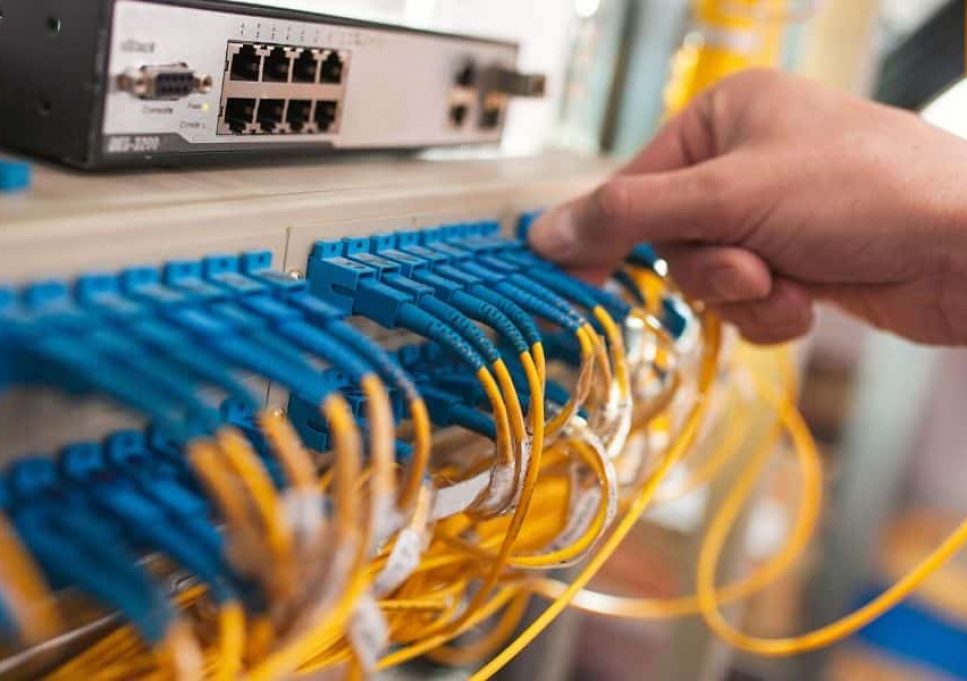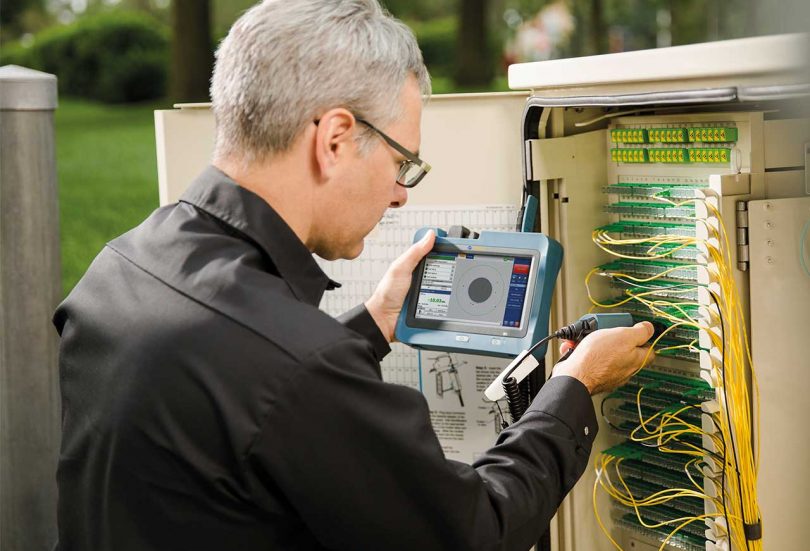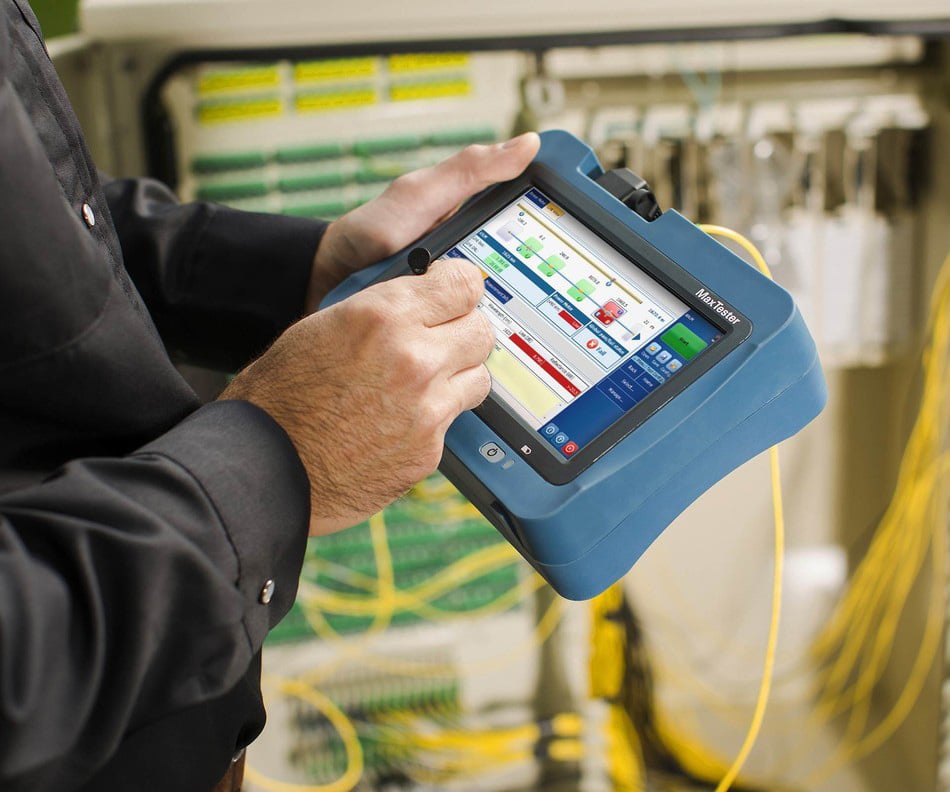

Ready to step into the future and experience the incredible speed of light? At Elite Fibre Optics, we deal in photon-fast data transmission. Located in Logan, we offer end-to-end fibre optic cabling services to private, commercial and civil clients from the Gold Coast to the Sunshine Coast and everywhere in between, including Brisbane, Caboolture, Toowoomba, Redland Bay and Ipswich.
Fibre optics can support higher bandwidths, which translates to more data moving at higher speeds. Think of it as your data highway opening extra lanes. Moreover, fibre optics are less susceptible to electromagnetic interference and signal loss, making them ideal for long-distance transmission. Say goodbye to the old days of traditional copper wires, and say hello to faster, more reliable data transmission. We plan, trench, splice and test to ensure your network is in peak condition.
At Elite Fibre Optics, we specialise in the installation of new fibre optic cabling. We can also locate and replace sections of damaged or faulty cabling, ensuring your network remains in tip-top condition.
With our in-depth knowledge, we can weave in redundancy parts to prevent shutdowns for critical services—because sometimes your network needs a plan B. Our team handles all types of fibre optics and takes care of planning the route for the cabling, cable trays and cable management. After installation, we’ll test and commission the system to ensure it’s up to industry standards and regulations.
Contact us on 1800 844 878 for a free quote today, and let’s light up your network with the speed and reliability of fibre optics.

When it comes to high-performance connectivity, precision matters. Choosing the right team for your fibre optic cabling in Logan means the difference between a system that performs at its peak—and one that causes frustration, downtime, or future expense. We bring a clear focus on quality, safety and technical expertise, making us a trusted choice for projects of all sizes across residential, commercial, and industrial settings.
Our experience spans a wide range of environments including new developments, data centres, office buildings, education facilities, health care, warehouses and multi-storey sites. Whether you need point-to-point fibre runs, upgrades to an existing network, or a full infrastructure rollout, we tailor each solution to your site, layout, and bandwidth needs.
We use only premium-grade components that are tested and compliant with Australian standards, and we follow industry best practices to ensure a clean, future-proof finish.
From underground installations to structured data cabling, we take pride in every connection. All work is carried out with minimal disruption and coordinated to align with your construction or IT schedule.
By offering personalised advice and efficient turnaround times, we aim to make data cabling installation straightforward and reliable. Our reputation is built on delivering stable, high-speed connections that are scalable for tomorrow’s needs—whether for homes, government buildings, or enterprise systems.
Looking for reliable fibre optic or data cabling solutions in Logan? Trust experienced professionals who understand your needs and deliver future-ready results. Whether you’re upgrading your infrastructure or planning a new installation, get in touch today for tailored advice and high-performance cabling systems.
Fibre optic cables can be installed in various locations depending on the infrastructure and the purpose of the network. Typically, they are laid underground along pathways, roadsides or within existing utility conduits for long-distance communication networks. For buildings and homes, fibre optic cables are installed through walls, ceilings or floors to connect devices directly to the high-speed network. The cables can also be routed through specialised ducts or trays within commercial properties for optimal performance and organisation. For fibre optic installation in Logan, contact us today!
The distance a fibre optic cable can be pulled largely depends on the type of fibre used and the installation environment. Single-mode fibre, often used for long-distance telecommunications, can transmit data over 40 kilometres without significant signal loss. On the other hand, multi-mode fibre, typically used for shorter distances, may be effective up to 2 kilometres. The cable’s pull strength also plays a role, so installation professionals consider tension limits to avoid damage. It ensures optimal functionality and longevity of the fibre optic network. If you need more information on fibre optics in Logan, get in touch with us!
The most significant advantage of fibre optic cabling is its ability to transmit data at exceptionally high speeds with minimal loss or interference. Unlike traditional copper cables, fibre optics use light signals, which allows for faster data transmission over longer distances without degradation. This technology offers greater bandwidth, ensuring more reliable connections even during peak usage times. Additionally, fibre optics are less prone to electromagnetic interference, making them ideal for environments where signal integrity is critical.
Fibre optic cabling is used to transmit data over long distances at high speeds using light signals instead of electrical currents. It’s commonly used in internet infrastructure, commercial networks, telecommunications systems, and industrial sites that require large volumes of data to be moved efficiently. Fibre is preferred for its bandwidth, reliability and resistance to electromagnetic interference, making it ideal for modern digital environments.
Fibre optic cabling transmits data using light signals, while copper cabling uses electrical currents. This means fibre can offer much faster speeds, higher bandwidth capacity, and longer transmission distances without signal degradation. Fibre is also more resistant to environmental interference and poses less fire risk. However, installation and termination require specialised equipment and training, making it important to engage professionals for the job.
Yes, fibre optic cabling can be installed in residential settings, particularly in new homes or developments where high-speed internet and future-ready infrastructure are priorities. It provides faster data transfer for streaming, gaming, remote work and smart home integration. In some cases, fibre to the home (FTTH) is offered by service providers, while internal fibre cabling may be installed for home offices or multi-room networking.
Structured data cabling refers to a standardised approach to designing and installing a comprehensive network of cables and hardware that supports multiple types of communication systems. It includes the cabling infrastructure for data, voice, security, and video systems in commercial and industrial buildings. Structured cabling helps ensure performance, simplifies troubleshooting, and allows for easier upgrades or changes over time.
The time required for data cabling installation depends on the size and complexity of the project. A small office or residential job might be completed in a day, while large-scale commercial or industrial installations can take several days or weeks. Factors like site access, the number of connection points, and whether existing infrastructure needs removal can all impact scheduling. A site assessment is usually recommended for a more accurate timeline.
Yes, fibre optic cabling is often run underground, particularly for external installations that connect buildings, campuses or infrastructure across large areas. Underground installations protect the cables from environmental damage and vandalism. It requires trenching, conduit systems, and proper sealing to maintain safety and performance. Compliance with local codes and permits is essential for underground cabling projects.
Data cabling systems typically require minimal maintenance once installed correctly. However, periodic checks are recommended to inspect cable integrity, connection points, patch panels and network hardware. Over time, environmental factors, wear and tear, or equipment upgrades may necessitate adjustments or replacements. Keeping documentation of your cabling layout and using quality components during installation can simplify maintenance over the life of the system.
Common signs of cabling faults include slow or unstable internet connections, dropped signals, increased latency, or devices frequently disconnecting from the network. You may also notice physical signs like damaged or loose connectors, pinched cables, or corrosion. In fibre systems, dirty or poorly terminated connectors can impact signal strength. If these symptoms occur, a professional assessment using testing equipment can quickly identify the issue and recommend the right fix.
When planning a data cabling installation, several key factors should be considered to ensure long-term reliability and performance. These include the size and layout of the premises, the number of devices to be connected, the bandwidth requirements, and the types of applications the network will support. It’s also important to plan for future growth by allowing additional cable runs and capacity for future expansion. Choosing the right cable category (such as Cat6 or Cat6a for copper, or single-mode vs. multi-mode for fibre) is crucial for speed and distance performance. Proper labelling, cable management and compliance with Australian standards are also essential for ongoing maintenance and troubleshooting.
Single-mode and multi-mode fibre optic cables differ in core size, transmission method and typical application. Single-mode fibre has a smaller core and transmits data using a single light signal, making it suitable for long-distance communication, often over tens or even hundreds of kilometres. Multi-mode fibre, with a larger core, allows multiple light signals to travel simultaneously. This makes it better suited for shorter distances, such as within buildings or data centres. While single-mode offers higher performance over longer distances, it tends to be more expensive and requires compatible hardware. Multi-mode is typically more cost-effective for short-range, high-capacity installations.